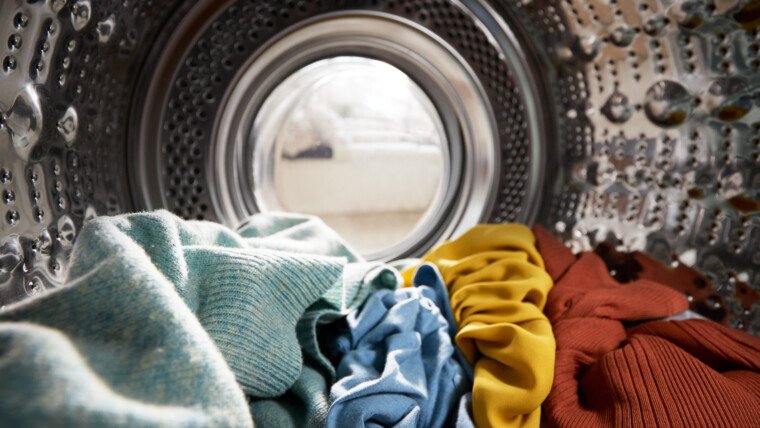Understanding Over Drying: Causes and Effects
Over drying laundry refers to the condition in which clothing, towels, and other fabrics are subjected to excessive heat and extended drying times, resulting in the removal of moisture beyond the optimal level. This process can have detrimental effects on the integrity and texture of the materials involved, impacting both their appearance and longevity. Several factors contribute to the occurrence of over drying, particularly for those utilizing laundry delivery services.
One of the primary causes is the use of high dryer settings. Many users may set the dryer to the maximum heat level, believing this will expedite the drying process. However, this approach often leads to over drying, especially for delicate fabrics that are not designed to withstand such intense temperatures. Similarly, prolonged drying times can exacerbate the situation. Leaving clothes in the dryer for extended periods, regardless of the heat setting, increases the likelihood of damage. It is essential to adjust drying times based on load size and fabric type to mitigate this risk.
Another common cause of over drying arises from improper laundry loads. Mixing heavy items, such as towels, with lighter fabrics can lead to uneven drying. The more absorbent items may take longer to dry, prompting the dryer to operate longer and overheat the lighter materials. This imbalance not only affects the texture and appearance of the lighter fabrics but can also increase energy consumption significantly due to the unnecessary extended use of the dryer.
The negative impacts of over drying cannot be overstated. Regular occurrences can result in damaged fibers, reduced softness, and faded colors in clothes, ultimately shortening their lifespan. Additionally, the excessive drying process increases energy costs, making laundry more expensive for users of delivery services. There is also the risk of static cling, which can make clothing uncomfortable to wear. Awareness and understanding of these issues are crucial for individuals relying on laundry delivery services, enabling them to enjoy fresher, more durable garments.
Choosing the Right Dryer Settings
Selecting the appropriate dryer settings is essential for preventing over drying of laundry, ensuring longevity for your garments and optimizing energy efficiency. One effective method is utilizing moisture sensor settings, which automatically detect the moisture level in your clothes and adjust drying time accordingly. This technology helps to prevent excess heat exposure, which can lead to fabric damage and shrinkage. Not only does it protect the integrity of your laundry, but it also reduces energy consumption, making it an eco-friendly option for laundry delivery service users.
Furthermore, understanding the ideal heat level for various fabric types is crucial. For instance, delicate fabrics such as silk or lace should be dried on the lowest heat setting, while heavier materials like towels or denim can handle moderate to high heat levels. Using high heat on delicate items can lead to fading, wear, and unwanted shrinkage, ultimately compromising the quality of your laundry. By familiarizing oneself with fabric care labels, users can make informed decisions that preserve their clothing.
In addition to these considerations, adjusting drying time based on load size and moisture content plays a significant role in preventing over drying. Smaller loads may require less drying time compared to larger loads, and clothes that are more damp due to washing conditions might need additional time to fully dry. Taking these factors into account when setting the dryer can enhance effectiveness while minimizing energy use. By being mindful of moisture levels and fabric care, users can significantly prolong the life of their wardrobe and maintain their laundry’s quality.
In conclusion, by selecting the right dryer settings based on moisture sensitivity, fabric type, and load considerations, individuals utilizing laundry delivery services can ensure their items remain in top condition while simultaneously saving on energy costs. Taking the time to adjust these settings may yield long-lasting benefits for both clothing and the environment.
Maximizing Efficiency in Laundry Loads
Efficient packing of laundry loads plays a crucial role in preventing over drying and ensuring optimal drying results. One key strategy involves separating heavy fabrics, such as towels and bedding, from lighter items like t-shirts and undergarments. This separation is essential because heavier fabrics retain moisture longer, which can lead to uneven drying if loaded together with lighter materials. By grouping similar fabrics, users can achieve a balance that promotes uniform drying, ultimately saving time and energy.
Furthermore, ensuring adequate airflow in the dryer is vital to maximizing drying efficiency. When clothes are crammed into the machine, it hampers the circulation of air, causing the dryer to work harder and potentially leading to over drying. It is advisable to leave space for clothes to tumble freely, which facilitates better evaporation of moisture. A well-ventilated load not only speeds up the drying process but also helps mitigate the risk of damaging delicate fabrics.
Moreover, overloading the machine can negatively impact both drying performance and garment care. Each drying cycle should be within the manufacturer’s recommended capacity to achieve optimal drying results. Overloading may cause certain items to remain wet after the cycle, necessitating additional drying time, which can lead to an increased risk of over drying the already dry pieces. To prevent this, users should regularly check their dryer’s capacity and ensure loads are manageable.




